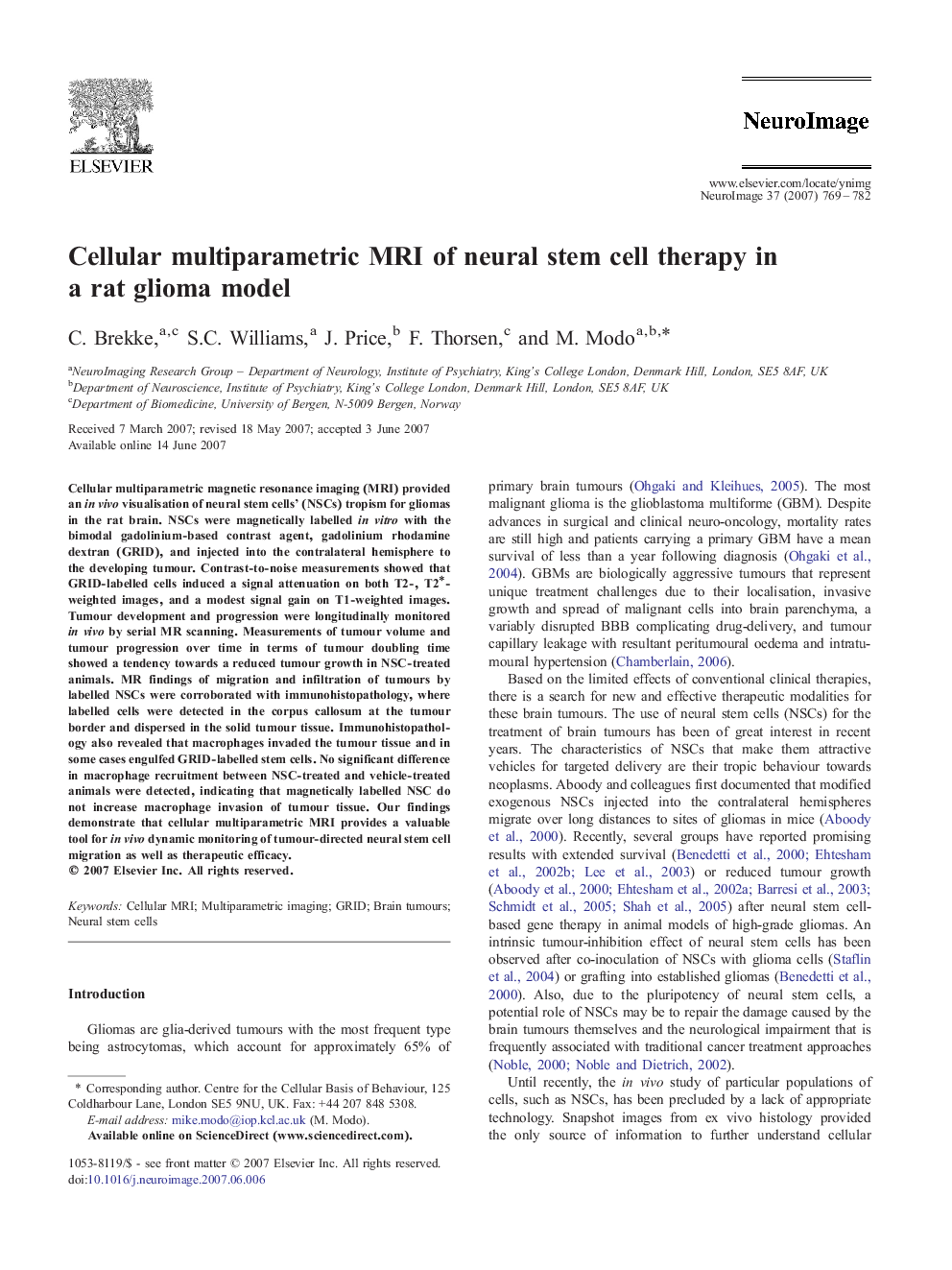| Article ID | Journal | Published Year | Pages | File Type |
|---|---|---|---|---|
| 6040150 | NeuroImage | 2007 | 14 Pages |
Abstract
Cellular multiparametric magnetic resonance imaging (MRI) provided an in vivo visualisation of neural stem cells' (NSCs) tropism for gliomas in the rat brain. NSCs were magnetically labelled in vitro with the bimodal gadolinium-based contrast agent, gadolinium rhodamine dextran (GRID), and injected into the contralateral hemisphere to the developing tumour. Contrast-to-noise measurements showed that GRID-labelled cells induced a signal attenuation on both T2-, T2â-weighted images, and a modest signal gain on T1-weighted images. Tumour development and progression were longitudinally monitored in vivo by serial MR scanning. Measurements of tumour volume and tumour progression over time in terms of tumour doubling time showed a tendency towards a reduced tumour growth in NSC-treated animals. MR findings of migration and infiltration of tumours by labelled NSCs were corroborated with immunohistopathology, where labelled cells were detected in the corpus callosum at the tumour border and dispersed in the solid tumour tissue. Immunohistopathology also revealed that macrophages invaded the tumour tissue and in some cases engulfed GRID-labelled stem cells. No significant difference in macrophage recruitment between NSC-treated and vehicle-treated animals were detected, indicating that magnetically labelled NSC do not increase macrophage invasion of tumour tissue. Our findings demonstrate that cellular multiparametric MRI provides a valuable tool for in vivo dynamic monitoring of tumour-directed neural stem cell migration as well as therapeutic efficacy.
Related Topics
Life Sciences
Neuroscience
Cognitive Neuroscience
Authors
C. Brekke, S.C. Williams, J. Price, F. Thorsen, M. Modo,
